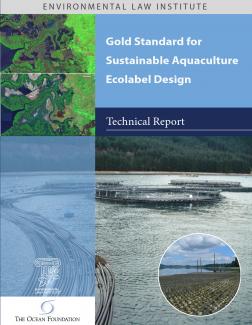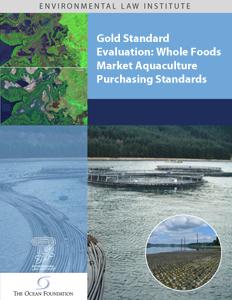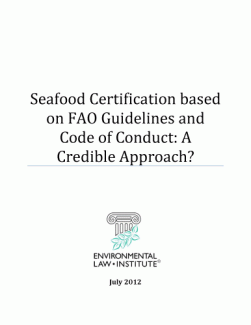Full Report on Stakeholder Workshops and Meetings Held in Belize June 12-16, 2023
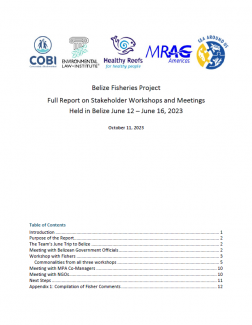
The Belize Fishery Project team is pleased to share our Full Report on Stakeholder Workshops and Meetings. This report provides a summary of the results of a series of workshops and meetings held in Belize the week of June 12, 2023, which had a primary aim of meeting with fishers in Belize to exchange information and understand fishers' experiences. It contains a compilation of comments received from fishers during these workshops.
Summary Report on Stakeholder Workshops and Meetings Held in Belize June 12-16, 2023
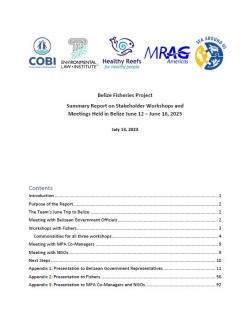
As promised during our meetings and stakeholder workshops on the week of June 12th, the Belize Fishery Project team is pleased to share our Summary Report on Stakeholder Workshops and Meetings, which had a primary aim of sharing draft project findings with fishers to exchange information and understand fishers’ experiences. We had the opportunity to present our draft findings to representatives of the government. We are working with the government to plan and conduct technical discussions on the methodologies, data, and findings thus far of the project.
Fish Out of Water
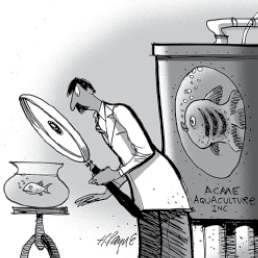
Aquaculture, the commercial production of finfish, shellfish, and seaweed, is today the fastest-growing food production sector globally. Fish consumption increased 122 percent from 1980 to 2018, with the greater demand met in large part by the burgeoning aquaculture industry. Indeed, aquaculture was responsible for 49 percent of the 178 million metric tons of marine animals produced worldwide in 2020, and the aquaculture industry is expected to be worth $262 billion in firm valuation by the end of 2026. The United States produced 658 million pounds of freshwater and marine species in 2019, with Atlantic Salmon ranked the leading species produced for marine aquaculture at 31.9 million pounds.
Being the big fish comes with environmental costs: marine-based aquaculture is associated with water body eutrophication, outbreaks of sea lice and other diseases, and impacts to sensitive habitat when farmed fish escape their net pens. Efforts to respond to these challenges spurred a growing part of the industry known as land-based aquaculture, called LBA—and especially a technology known as the recirculating aquaculture system, or RAS. Before water is discharged into the local environment, RAS treats and recirculates it multiple times through mechanical and biological processes that eliminate ammonia from fish waste, treat pH imbalance, control temperature, remove solids, aerate, and more.
The United States, which imports more fish than any other country, looks like a great catch for the RAS industry, offering an opportunity to build facilities close to robust markets. But right now only a handful of large-scale RAS facilities currently operate in the United States. Examples include Atlantic Sapphire in Florida, AquaBounty in Indiana, and LocalCoho in New York. Expansion plans are underway for industrial production in states like Maine, California, and Maryland.
Proponents claim that RAS facilities environmentally outperform marine aquaculture, citing the former for their ability to discharge less pollution such as nitrogen and phosphorus (through water effluent) and carbon dioxide (via air emissions). Additionally, highly efficient facilities can recycle upwards of 90 percent of the water they consume. Waste is more easily controlled on land, risk of escape is significantly reduced, and there is a lower probability of sea lice and other diseases penetrating the system. Each kilogram of salmon (for example) additionally represents a reduction of 27 kilograms of CO₂ produced relative to beef, the most carbon-intensive protein source. Advocates also highlight economic advantages: bringing fish production closer to key inland markets, plus the flexibility of siting LBA facilities, means more communities benefit from local investment and job growth.
But critics note that this technology introduces its own set of environmental challenges. LBA and RAS have higher energy demands than other forms of aquaculture. Critics point to the carbon dioxide released during water treatment as well as further up the supply chain during feed production. Land use and siting raise concerns about impacts to habitat and the surrounding human environment. Water recycling rates also vary substantially from one facility to the next, and facilities may discharge metals, like aluminum, into nearby waterbodies.
Congress recognized the national appetite for seafood over 40 years ago, when it passed the National Aquaculture Act of 1980. The NAA makes aquaculture a national policy priority and established an interagency coordinating body, the Subcommittee on Aquaculture, to advance the effectiveness and productivity of federal aquaculture research, regulation, technology transfer, and assistance programs. Yet the NAA and other federal and state laws governing aquaculture were originally designed for marine facilities. Land-based aquaculture is primarily regulated at the state, tribal, and local level. The Environmental Law Institute’s research into the topic found the regulatory framework at all levels of government generally inadequate to address critics’ concerns about environmental impacts of this growing industry.
Siting LBA facilities is, at its core, a land use and planning decision that also has implications for the aquatic environment through overflow or other discharges into waterbodies. This means state and local policymakers can play a key role in promoting sustainable LBA through smart regulation and oversight. A total of 47 states are authorized to issue National Pollutant Discharge Elimination System permits for wastewater under the Clean Water Act’s cooperative federalism model. At the local level, planning agencies issue development permits, often soliciting input from the communities impacted by their decisions.
ELI’s recently released “Fish Forward” report identifies multiple opportunities for addressing and mitigating the industry’s environmental impacts. The report is based on a deep dive into the regulatory frameworks of four countries (the United States, United Arab Emirates, Norway, and Canada) and four states (Maine, California, Florida, and Wisconsin) and presents case studies of three large-scale RAS facilities approved or currently operating in the United States and Finland. The best regulatory practices revealed fit into three major categories: avoiding or mitigating environmental impacts; promoting transparency, public engagement, and expert and stakeholder input; and supporting measures to ensure regulation keeps pace with technological innovation while providing industry players with certainty.
This ELI Policy Brief offers just a few pearls of wisdom from “Fish Forward” that state and local policymakers can customize and apply:
Undertake an environmental impact assessment early in the project proposal stage.
The California Environmental Quality Act’s robust environmental review provisions applied to Nordic AquaFarms, a $100 million land-based facility proposed for a former brownfield site on the Samoa Peninsula in Humboldt County. At full capacity, the Nordic facility anticipated producing approximately 25,000 to 27,000 metric tons of Atlantic salmon per year, though recently switched to yellowtail kingfish with up to 3,000 metric tons produced annually in phase one of the project. Nordic can avoid many environmental impacts altogether: the facility will utilize existing infrastructure, including an industrial water supply line, sea water intakes, and outflow pipe, and the site is already zoned for coastal industrial use.
But the Environmental Impact Report conducted under the California statute found the additional construction needed could affect the marine ecosystem and aquatic species, such as Longfin Smelt larvae. Nordic’s co-applicant, the Humboldt Bay Harbor, Recreation, and Conservation District, must consequently mitigate for impacts to the smelt by upgrading water intake screens and carrying out one-to-one compensatory mitigation through creation of suitable nursery habitat. Mitigation measures detailed in the EIR also address air quality, greenhouse gas emissions, stormwater runoff, fish escapement, and waste.
Another example is Canada, where the provincial and territorial governments typically license aquaculture operations subject to an assessment. Nova Scotia’s Aquaculture License and Lease Regulations establish a two-tier licensing system: Land-based facilities undergo the less onerous administrative process, which is limited to activities deemed as posing less environmental risk, rather than the adjudicative approval process for marine systems. Proponents submit a development plan, containing relevant biophysical, technical, or social data. The Ministry of Fisheries and Aquaculture assesses the plan, which includes information on technical viability, effluent treatment, infrastructure, escapement, compliance history, and impacts to conservation areas and to other users.
The agency administrator then evaluates the application against the regulatory provisions, called the Section 43 factors. These start with financial viability of the proponent and proposed operation (including the proponent’s history and future projections). The agency also considers adherence to the statute, regulations, guidelines, and policies (including impact to other users, the ecosystem, and the public’s right of navigation). There is an evaluation of technical viability. Next, the administrator consults with federal and provincial and territorial agencies as required under other laws, and with any other parties, as needed. The administrator finally issues a written decision, accompanied by the rationale, on whether to issue the license.
Project proponents have yet another hoop to swim through: the province requires a separate environmental assessment under Nova Scotia’s Environment Act. The minister of the Department of Environment and Climate Change oversees the process, though the assessment may be referred to a review panel, depending on the scope and scale of the proposed undertaking. ECC considers the location and the surrounding area’s nature and sensitivity, concerns expressed by the public and Indigenous people about the proposed undertaking’s effects, steps the proponent took to address those concerns, the sufficiency of environmental baseline information provided, and any known or potential adverse or environmental effects.
Establish and implement numerical science-based standards for biological oxygen demand, suspended solids, and nitrogen.
In the United States, LBA facilities that contain, grow, or hold cold water fish, or ponds, raceways, or other similar structures that annually discharge effluent at least 30 days and produce 20,000 or more pounds of aquatic animals, are classified as Concentrated Aquatic Animal Production facilities. EPA may, on a case-by-case basis, require smaller land-based aquaculture facilities that otherwise do not meet the requirements to qualify as CAAPs, to obtain a permit. CAAPs qualify as point sources under the CWA. Section 402 requires point sources to obtain a NPDES permit to discharge pollutants into “waters of the United States.” Both states and tribes may broaden the definition of regulated waters under the program. States and tribes with an approved program can issue permits for discharges into regulated waters within their respective jurisdictions.
NPDES permits contain industry-specific technology-based effluent limitations or water-quality-based limits, establish pollutant monitoring and reporting requirements, and impose recordkeeping requirements, among other special and standard conditions aimed at protecting water quality. CAAP facilities that produce 100,000 pounds or more of fish per year are covered under the CAAP Effluent Limitation Guidelines. The CAAP ELGs apply to industrial RAS facilities and contain narrative rather than numeric effluent-limitation requirements. They stipulate a series of management practices designed to decrease pollutant discharges. The CAAP ELGs date to the early 2000s and do not address the emerging water quality impacts associated with modern RAS facilities. States, however, may adopt their own numeric effluent limitations without waiting for EPA.
Control water consumption via diversion thresholds, stringent reuse goals, water supply assessments, and incorporation of water-efficient technologies.
While promoters of RAS highlight its potential to reduce water consumption to one percent of traditional land-based aquaculture’s usage level, not all RAS operations live up to this promise. This underscores the need for standardized water consumption metrics across the industry.
Intensity is one such metric, a quantity corresponding to the level of water an RAS operation uses. This figure is helpful for comparing facilities that raise different species of fish, at different quantities, and with different levels of water usage. Intensity can be calculated by measuring the amount of water a facility uses per kilogram of fish produced. The standard time scale at which this is calculated is annually.
According to the Food and Agriculture Organization, a typical land-based flow-through system (not recirculating) will use 30 cubic meters of water per kilogram of fish produced. The most water efficient RAS, designated super intensive, uses as little as 0.3 cubic meters per kilogram of fish produced. An intensive RAS consumes 1 cubic meter, and a low-level RAS uses 3 cubic meters per kilogram of fish produced.
Policymakers should realize a given RAS facility’s water efficiency often has less to do with its recirculation rate and more with the intensity of its water usage, calculated as described above, as appropriate. Evaluating a facility’s water consumption using this metric can be revealing. For example, Atlantic Sapphire, an RAS operation in Florida, touts a 99 percent water recirculation rate. But its per-kilogram intensity is 8.7 cubic meters, meaning the facility is less efficient than even the average low-level RAS. On the other hand, Ideal Fish in Waterbury, Connecticut, pledges to recirculate 95 percent of water consumed, but its calculated intensity is 0.26 cubic meters per kilogram, qualifying the facility as super intensive.
In California, lead agencies responsible for carrying out an environmental review must identify any public water system that may supply water to the proposed project, and request it prepare a Water Supply Assessment. The WSA determines whether the system’s water management plan accounts for the projected demand and, if it concludes insufficient supply exists, describes any measures underway to attain the needed water. The lead agency incorporates the WSA into the environmental document as part of its analysis of the project’s potential impacts. Many lead agencies require the public water system to provide a “will-serve” letter, verifying it can supply sufficient water to meet the project’s needs.
The Nordic Aquafarm facility will use 2.5 million gallons per day of fresh water for operations. This includes both .502 mgd domestic (potable) water sourced from the Mad River, and 2 mgd industrial (non-potable) water, pumped from Humboldt Bay. The potable water supplier, Humboldt Bay Municipal Water District, provided a “will-serve” letter confirming sufficient water will be available for the project.
Reduce the industry’s energy consumption and carbon footprint.
State—and to a degree, local—governments can motivate RAS facility owners and operators to reduce GHG emissions by requiring renewable energy sources, adopting energy efficiency measures, and establishing benchmarking and reporting programs. International aquaculture certification programs offer practical ideas for implementation. For example, certification as a land-based RAS farm under the Aquaculture Stewardship Council requires complying with species-specific standards in addition to receiving a passing grade across a series of indicators. Indicators addressing energy consumption span recordkeeping, annual assessments, and a documented strategy for reducing GHG emissions within three years of the ASC’s initial audit. The entire production chain is accounted for, including GHG emissions associated with off-site feed production. Best Aquaculture Practices, another program, similarly requires stringent recordkeeping of annual energy use. Still another, Good Agricultural Practices (GlobalG.A.P.) certification, mandates that RAS facilities monitor their energy use and develop energy efficiency plans based on the monitoring results. Both BAP and GlobalG.A.P. certification expect facilities to minimize nonrenewable energy wherever possible.
Engage the community through proactive notification, soliciting public comment through written submissions and oral hearings at accessible times and locations, and endeavor to incorporate all reasonable and feasible suggestions.
In Nova Scotia, members of the public may submit written comments, limited to the same factors the agency administrator applies, within a 30-day comment period. An environmental assessment under the Environment Act engages the public at multiple junctures. For instance, if an assessment is required, the ECC proposes terms of reference on which both the public and proponent can comment. The terms of reference will address consideration of feedback from the public, municipalities in the vicinity, and affected Indigenous peoples.
ASC requires evidence that owners and operators regularly and meaningfully consulted with the community organizations and representatives and obtained community approval prior to taking any action restricting access to important local resources. GlobalG.A.P. mandates a restoration plan that incorporates financing and compensation agreed to by local communities.
Adopt a centralized permitting system with a comprehensive process and easily accessible information.
Aquaculture in the United Arab Emirates is regulated at the national and local levels through federal laws, executive issuances, and local standards set by the seven emirates. The Ministry of Climate Change and Environment is the lead federal regulatory agency and is authorized to issue the required Aquaculture Farm Establishment License. The regulatory system takes a bottom-up approach, requiring emirate involvement in the early stages of the permitting process. The ministry directs proponents to first obtain the necessary permits from the emirates before it will consider issuing the license. Proponents submit all approved permits and other required items through the agency’s online portal. The result is a streamlined regulatory process that promotes close coordination between the federal government and the emirates.
Norway offers another example through its Aquaculture Act, which applies broadly to all forms of aquaculture, including land-based facilities. The Ministry of Trade, Industry, and Fisheries implements and enforces the Aquaculture Act through the Directorate of Fisheries, whose main responsibilities include regulation, guidance, supervision, resource management, and quality control. The directorate’s regional offices are authorized to issue aquaculture permits. Salmon farmers must obtain both a production and site license to operate a facility. The site license imposes certain technical and operational requirements, and the production license (one type being for commercial facilities) regulates aspects of the actual fish production, such as weight and biomass. Farmers also obtain permits required under other statutes, like the Food Safety Act, the Pollution Control Act, and the Water Resources Act. The application procedure is centralized: the directorate’s regional office coordinates the process, obtaining key authorizations from other federal and local agencies.
Canada provides a counter-example. Regulation of the country’s aquaculture sector is largely shared between the federal and provincial or territorial governments, with local authority over land use and development decisions. Three distinct regulatory frameworks, applied to British Columbia, Prince Edward Island, and the rest of the nation, respectively, produce a fragmented system of oversight. The foundation for federal oversight of aquaculture operations largely rests on the Fisheries Act. Parliament enacted the statute intending for it to regulate the wild capture fisheries, but several provisions—pollution prevention, licensing, management, and habitat protection—are directly applied to the aquaculture industry and serve as the basis for sector-specific regulations.
The federal government is the primary regulator of aquaculture in British Columbia, following the 2009 Morton Decision of the province’s Supreme Court. The Court categorized aquaculture as a fishery. Fisheries fall under federal jurisdiction according to the Constitution Act of 1867, and by that logic, so do aquaculture facilities. In 2010, both governments signed a memorandum of understanding, the Canada-British Columbia Agreement on Aquaculture Management, which defined each party’s roles and responsibilities. Fisheries and Oceans Canada, known as DFO, later promulgated the Pacific Aquaculture Regulations, pertaining specifically to British Columbia, and established the British Columbia Aquaculture Regulatory Program. In comparison, Prince Edward Island and DFO entered into the Canada-Prince Edward Island Memorandum of Understanding for Commercial Aquaculture Development in 1928, renewing the agreement in 1987. The MOU established the P.E.I. Aquaculture Leasing and Management Board, with federal, provincial, and industry representation. DFO maintains jurisdiction over licenses (operations) and leases (land tenure) through its P.E.I. Aquaculture Leasing Division.
Canadian policymakers recognize the fractured, tripart regulatory scheme creates inconsistency, confusion, and complexity, and that the Fisheries Act was never intended to regulate the aquaculture industry. A 2016 Standing Senate Committee on Fisheries and Oceans report recommended DFO introduce a federal statute establishing a unified framework, which was followed by a 2017 Advisory Council on Economic Growth report calling for legislative reform, and a 2018 meeting of the Canadian Council of Fisheries and Aquaculture Ministers that resulted in support for such a measure. In 2019, the prime minister instructed DFO and the Coast Guard to begin developing a federal aquaculture act.
DFO undertook this effort, carrying out a public engagement campaign in 2019 and making its discussion paper available for public comment in 2020 and 2021. DFO also undertook separate engagement with First Nations and other Indigenous peoples in 2022. The goals of a new, unified framework are to establish national consistency; clarify division of powers and jurisdictional roles; simplify or streamline regulation; and enhance environmental protection. The proposed legislation would be partially based on the Fisheries Act and would establish a licensing and enforcement system, specialized advisory panels, environmental protection standards, and a public registry.
Define key terminology, such as aquaculture, land-based aquaculture, RAS aquaculture, and terms like Community of Concern, Disadvantaged Community, and Environmental Justice Community.
The U.S. Environmental Protection Agency has not adopted regulatory definitions of LBA-specific terms, such as RAS or flow-through systems. EPA currently considers only point sources and facilities meeting the definition of Concentrated Aquatic Animal Production, which encompass both RAS and flow-through facilities. Establishing a more detailed and LBA-specific set of definitions could set a floor (at least in the NPDES context) for operations that qualify as RAS or meet certain intensity-level designations. Just as states may adopt their own, numeric effluent limits without waiting for EPA, they may also establish their own set of LBA industry-specific definitions.
As the land-based RAS aquaculture industry in the United States continues to grow, NGOs, local residents, and other stakeholders are paying attention to the environmental impacts. Policymakers know they must act proactively on behalf of their constituents to ensure the industry’s expansion is sustainable. Many of the best practices summarized above can be tailored to each jurisdiction’s priorities and available resources. Above all, “Fish Forward” demonstrates that state and local governments can work within their existing regulatory frameworks to develop standards for land-based aquaculture promoting both environmental sustainability and economic growth. R&P
ELI POLICY BRIEF No. 19 Existing law is catching up with land-based aquaculture, a burgeoning industry in the United States and elsewhere. In the interim, facility impacts can be lessened through best regulatory practices that minimize environmental effects.
The Debate: Dangerous Intersection: Climate Change and National Security
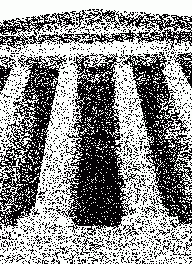
The dangers of climate change are not usually couched in terms of national security, but awareness of the issue is growing rapidly. What could be more basic to security than a climate conducive for agriculture, abundant water supplies, ecosystem health, industrial production, biodiversity, and human comfort? What could be more threatening than extreme weather events or mass migrations because of rising seas and crop failures? The annual ELI-Miriam Hamilton Keare Policy Forum brought together top experts on the topic.
Transparency and Accountability
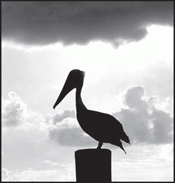
As tens of billions of dollars are spent over the coming decades to restore the Gulf of Mexico after the Deepwater Horizon oil spill, a variety of mechanisms have been created to ensure responsible stewardship of public resources, natural and monetary.
